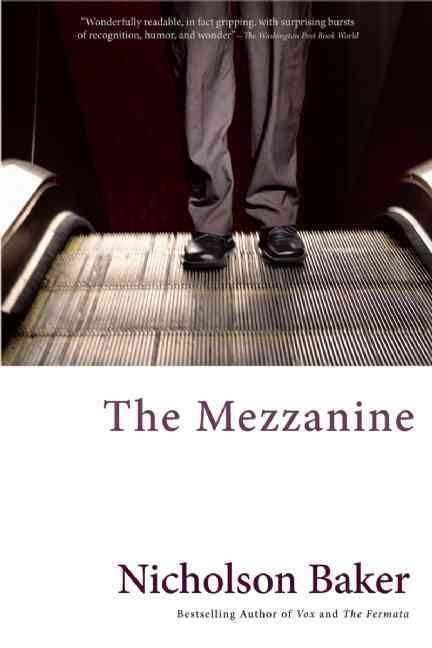7.8 /10 1 Votes7.8
Language English Media type Print (Paperback) ISBN 978-0-679-72576-3 Originally published 1988 Genre Novel Publisher Weidenfeld & Nicolson | 3.9/5 Goodreads Publication date 1988 Pages 144pp OCLC 20167522 LC Class PS3552.A4325 M49 1990 Country United States of America | |||||||||||||||||||||||||||||||||
 | ||||||||||||||||||||||||||||||||||
Similar The Fermata, The Anthologist, House of Holes, A box of matches, Vox | ||||||||||||||||||||||||||||||||||
Book review nicholson baker the mezzanine
The Mezzanine (1988) is the first novel by Nicholson Baker, about what goes through a man's mind during a modern lunch break.
Contents
- Book review nicholson baker the mezzanine
- The men s room the mezzanine
- Concept
- Plot
- Critical reception
- References
The men s room the mezzanine
Concept
On the surface, the novel deals with a man's lunchtime trip up an escalator in the mezzanine of the office building where he works (a building based on Baker's recollections of Rochester's Midtown Plaza). In reality, it describes the thoughts that run through a person's mind in any given few moments, and the ideas that might result if he or she were given the time to think these thoughts through to their conclusions. The Mezzanine does this through the extensive use of footnotes—some of them comprising the bulk of the page—as the narrator travels through his own mind and past. The footnotes are quite detailed and sometimes diverge into multiple levels of abstraction. Near the end of the book, there is a multi-page footnote on the subject of footnotes themselves.
Plot
The Mezzanine is a plotless, stream-of-consciousness examination that greatly details the lunch-hour activities of young office worker Howie, whose simple lunch (popcorn, hot dog, cookie and milk) and purchase of a new pair of shoelaces are contrasted with his reading of a paperback edition of Marcus Aurelius's Meditations. Baker's digressive novel, partly composed of extensive footnotes of up to several pages, follows Howie's contemplations of a variety of everyday concepts, such as how paper milk cartons replaced glass milk bottles, the miracle of perforation, and the buoyant nature of plastic straws; and everyday objects such as vending machines, paper towel dispensers and popcorn poppers.
Critical reception
The novel was praised for its originality and linguistic virtuosity. Critics cited Baker's trademark style of highly descriptive, focused prose; his "fierce attention to detail"; and his delight in portraying discrete slices of time within mundane existence. It created the genre for which Baker is best known, and for which he may be its boldest representative. In their references to the book, the academic website eNotes.com said, "Like Proust, [Baker] makes the personal significant."
